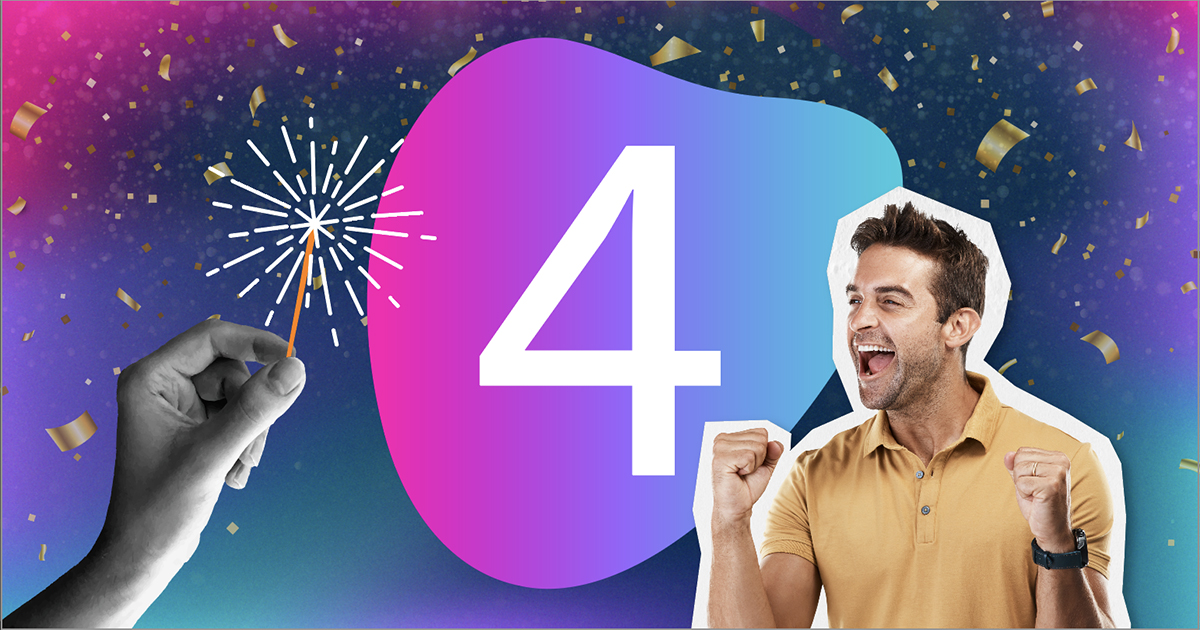
Direct Mail for the Digital Age, Part 2:
The Power of Personalization

Recently, PFL hosted a virtual event featuring CMO Jennifer Bellin, VP Customer Experience Kara Trapp, and Forrester Research’s VP and Principal Analyst Laura Ramos. This roundtable discussion was based on the findings of a Forrester-PFL co-created study titled, “Direct Mail for the Digital Age.” The first in the series highlighted the “Power of Engagement.” Here, in Part 2, we examine how the ability to personalize and measure with modern direct mail makes all the difference. All data and analyses are from the study.
Personalization—when done right—is extremely powerful in marketing because it speaks to the individual. Forrester’s Laura Ramos told a little story that makes this abundantly clear.
“When I was at Xerox some years ago, I received dimensional mail from someone. Here I was in the office and ‘Oh, a package!’ So, what's the first thing you do? You open it up, of course, to see what’s inside.” Ramos went on to explain that it was a man's wallet. “And then I think, well, jeez, couldn't they figure out I was a woman?”

Ramos explained that her entire impression of what happened afterwards was really colored by that experience. When she opened the package “there were all these clever things inside the wallet. Like a ticket for the dry cleaner and a book of matches with a handwritten note saying, ‘Hey, call me.’ Everything in there was pointing to the company that had sent me the wallet.”
So, what’s the point? According to Ramos: “No personalization at all is not valuable, right? But what’s even worse is bad personalization, which was what I received.”
Ramos’s impression was that the wallet was a gift. “The gift is for me,” she said. “I think I have an obviously feminine name, and I get a man's wallet. That’s a swing and a miss. And it’s worse than no personalization at all.”
The bottom line here is that it’s important to be spot on with personalization. The recent Forrester-PFL study shows why many companies are not getting personalization right. There are so many things that are holding marketers back. “So, we wondered,” said Ramos, “with the importance of direct mail, why aren’t more companies doing it?”

Integrated Data
“What's interesting,” added PFL CMO Jennifer Bellin’s, “is that more than half of the respondents [to our survey] don’t believe their data systems can integrate with direct mail systems, such as PFL’s. We believe PFL has a solution for that.”
Bellin also noted that the respondents were clear in their belief that optimization and measurability are only part of the digital world, not the physical one. “They say they prefer digital touchpoints for that reason. But we know that physical touchpoints are measurable, too. What’s more, many weren’t aware that personalizing direct mail was possible, either.” All of these challenges are more easily overcome today, explained the CMO, which makes physical mail a channel that should be an important part of the marketing mix today.
But just how important is personalization and the customization in marketing today? The panelists generally agreed that personalization is extremely important. “It’s been a key part of my marketing programs for years and years,” said Bellin.
The CMO talked about her time at Paycor and how her team was so excited to begin personalizing their outreach. “Our goal was to be so personalized that our messages might shock the prospects by how much we knew about them—without creeping them out, of course,” she joked.
The idea Bellin and her team came up with was to personalize based on the industry that prospects and customers belonged to, along with their title, company size, region, and top pain point. “We would send a series of emails,” she explained, “one for each of the things we knew about them, until it felt as if we knew them very well.”

The panel went on to discuss how it’s possible, today, to become even more targeted and personalized than that, especially with ABM accounts. It was suggested that BDRs become experts on those accounts, and then meet monthly as a group of sales and marketing individuals to discuss all ABM accounts one by one. At these meetings, team members can share what’s been collectively learned—it might be digital signals, the types of content they are engaging with, prospecting notes, and more. “You can take all of that and use it to personalize direct mail in all sorts of ways,” suggested Bellin.
The PFL CMO offered these three quick tips for personalization:
- The more personalized the better. Handwritten notes are extremely valuable. PFL can do what appear to be handwritten notes, and we can also customize the information. This makes the personalization even stronger in that we can clearly know your pain. This is not just, “Dear Sally.” It’s imperative to personalize all over the place.
- Content and messaging are critical. It’s not just about some cute item that you send—the message or thought leadership must have some value for your recipient, it has to impart that you know the person and their issues and challenges.
- Be creative and stand out. One idea, for instance, is to send out personalized video brochures, something PFL is very good at. People love them because it’s not something they see every day. Be creative and break the script.
The panel agreed that, if customer data exists within your systems, it can be accessed and used to personalized direct mail messaging, and that’s intelligent marketing.




